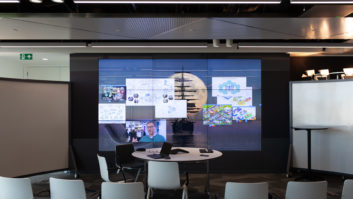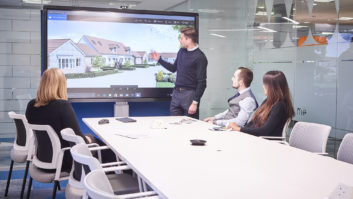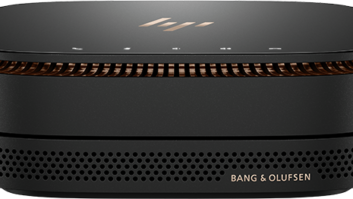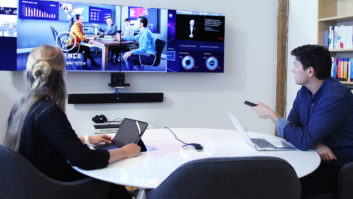
Whenever I hear anyone talk about huddle rooms, my mind is taken back, for reasons that aren’t wholly clear to me, to a 1939 movie called Babes in Arms. You probably haven’t seen it. Only those who endured wet Sunday afternoons in the UK in the 1960s know what it’s like to regularly watch ancient Hollywood movies in black and white.
Starring Mickey Rooney and Judy Garland, the film describes how, in the face of competition from talking pictures and the decline of vaudeville, a group of children decide to put on a show by themselves. It features the immortal line “Let’s do the show right here”, which became pretty much a mainstay of so-called ‘backyard musicals’.
Actually, I do recall why I make that connection. Typically, a show takes a lot of planning. It requires formal processes. It needs specialist equipment. Everyone has a designated role. So: very much like the business meetings we used to know. But now, much like the kids in Babes in Arms, anyone can have a meeting wherever and whenever they like, without all those encumbrances. We have pop-up meetings, just like we have pop-up shops and pop-up restaurants.
The new mantra
I’m talking, of course, about the huddle room phenomenon. In this brave new world in which collaboration is the new mantra, we can put on a meeting right here, right now. Well, we could; except that the art of communicating with each other without the support of technology appears to be a lost one. That’s especially true for millennials for whom digital devices represent some kind of life support system.
So: we need an electronic way of sharing; not only with those in the huddle room but, increasingly, with colleagues or customers somewhere else. A complex, expensive video conferencing suite is, of course, out of the question, which has given rise to a host of audiovisual systems designed to facilitate ad hoc, casual information exchange.
So far, so good. AV integrators have always thrived on providing support for meetings, from the simplest projector/screen combination all the way to all-singing, all-dancing boardroom suites. More meetings equals more opportunities, right?
Well: yes and no. Yes, back in 2015, the oft-quoted study by Wainhouse Research opined that there might be as many as 50 million huddle rooms worldwide. That’s a lot of spaces to equip. But then again, no. The key characteristics of huddle room systems are that they are a) low cost, b) easy to install, and c) simple to use. It would be easy to conclude, therefore, that there’s a ton of business out there to be had; but with low revenue, low margin, and low potential for value add. That goes somewhat counter to the historic integrator business model.
Doesn’t augur well
This was brought into sharp focus for me recently when I was talking to a major supplier of huddle room equipment about training. “One of our USPs,” he said, “is that our products are very easy to set up, so in most cases product training isn’t necessary.” So, to exaggerate for effect: the product just needs to be delivered, not installed, and users will get themselves up to speed. That doesn’t seem to augur well for the integrator community. In fact: why would the end user involve an integrator at all?
Huddle rooms, it seems reasonable to conclude, represent something of a paradigm shift for integrators – and one they’re getting used to as the world becomes increasingly plug ‘n’ play. Their role is becoming one of educator, of trusted advisor, perhaps in collaboration with specialists who can advise on not just equipment, but design, layout, acoustics, furnishing and so on. For end users, huddle rooms may appear to be somewhat trivial, and thus require minimal thought. The fact is that, the way businesses operate today, they are mission critical and require no less planning than a boardroom. They need an integrator, because those spaces really need to work.
In fact, looking back: drawing a parallel between the barn in which those kids put on their show and modern meeting spaces perhaps wasn’t such a clever idea after all.







